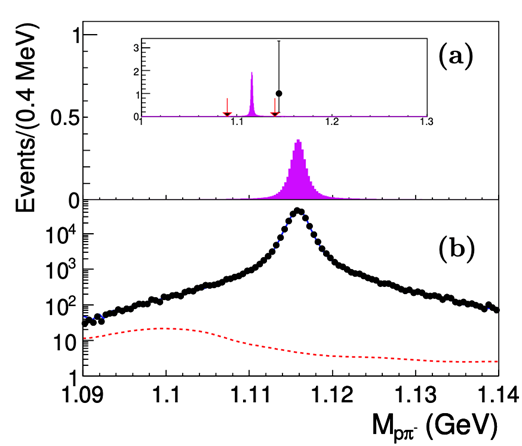

According to modern physics, our universe is believed to have originated from a 'big bang', during which an exactly equal amount of matter and anti-matter was produced. However, various of experimental evidences indicate that the current universe is dominated by matter rather than anti-matter. In order to explain the asymmetry, Sakharov proposed the famous Three Rules in 1967, pointing out that the baryon number (B) violation plays a key role in resolving this puzzle. To this day, extensive research has been conducted on proton decay and the decay of various hadrons that violate baryon number, yet no positive signals have been found. Nevertheless, the commonality of these studies is that the difference between the baryon number and lepton number (L) in the initial and final states remains unchanged. Therefore, exploring new types of baryon number violating phenomena has become increasingly imperative.
Based on 1.3 billion J/ψ events collected at the BESIII detector, BESIII Collaboration presents the first search of a process, in which the baryon number in the initial and final states changes 2, i.e., in J/ψ→ pK-Λbar decay with the Λbar possibly oscillates to Λ. Such oscillations, invoking a quark of second generation, offer a crucial testing ground to explore the theories related to B, L, and B-L conservations, which extend the studies in the neutron-anti-neutron oscillation experiments. In the analysis, the pK-Λbar final state before oscillating is defined as `right sign` (RS), and the pK-Λ final state after oscillating is defined as `wrong sign` (WS). As is shown in Fig.1, the background of the RS distribution is extremely low and the signal is very clean, while in the WS distribution, no events fall in the signal region, indicating no oscillation signal. Taking into account information such as background estimation, detection efficiency, and system uncertainty, we estimate the first upper limit of Λbar-Λ oscillations as 4.4×10-6, leading to the upper limit of the oscillation parameter σmosc <3.8×10-18GeV. This result expands the field of baryon-anti-baryon oscillation experiments and will inspire further theoretical and experimental researches.

FIG. 1. Distribution of Mpπ- for (a) WS events in the signal region and (inset) over the full span, where the filled circle with error bar is from data, the pink filled histogram, normalized arbitrarily, stems from simulated WS signal events, and the arrows in the inset figure show the edges of the signal region; (b) RS events from data, where the filled circles with error bars are from data, the blue solid line represents the result of the fit and the dashed line shows the background contribution.
The PRL publication:
URL: https://link.aps.org/doi/10.1103/PhysRevLett.131.121801
DOI: 10.1103/PhysRevLett.131.121801